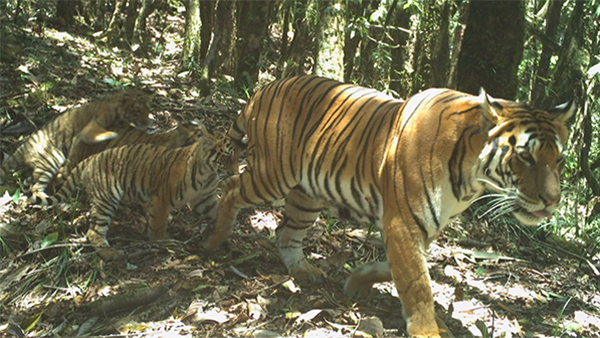 Bhutan is on track to contribute to the global ambition of doubling the tiger population by next year. And in remarkable news, camera traps have spotted a tigress, not seen since 2014 with three cubs in Zhemgang. The Zhemgang Forest Division office also confirmed that another tigress with three more cubs is also thriving in the forests of Zhemgang.
Bhutan is on track to contribute to the global ambition of doubling the tiger population by next year. And in remarkable news, camera traps have spotted a tigress, not seen since 2014 with three cubs in Zhemgang. The Zhemgang Forest Division office also confirmed that another tigress with three more cubs is also thriving in the forests of Zhemgang.
The tigress, code-named BTN-34, was last captured on camera traps in 2014. No sight of BTN-34 since then. But recently, footages retrieved from the camera traps set up in the Zhemgang Forest Divisional territory saw the same tigress with three healthy cubs. The division office installed the camera traps in April last year.
Phub Dorji, a forestry officer of Zhemgang Forestry Division said, “the breeding habitat of a tigress needs to fulfil a lot of ecological criteria.”
He added that “we found two-mother tigress and both of them have three cubs each. We have done a lot of conservation works and we are hoping the tiger population will increase.”
Tigers are the apex predators. A thriving tiger population in the wild is also an indication of a healthy ecosystem.
“If the number of wild pigs and deers increase, it will cause an imbalance in the ecosystem. In the wild, the presence of a tiger will keep the population of other wild animals down the food chain in check,” said Phub Dorji.
Even a report detailing the number of tigers and population density, migration pattern, habitat and food source in Zhemgang is expected in about two months. The works were carried out with the support from WWF Bhutan’s CA|TS Programme and the UNDP GEF Small Grants Programme.
Sherub Dorji






